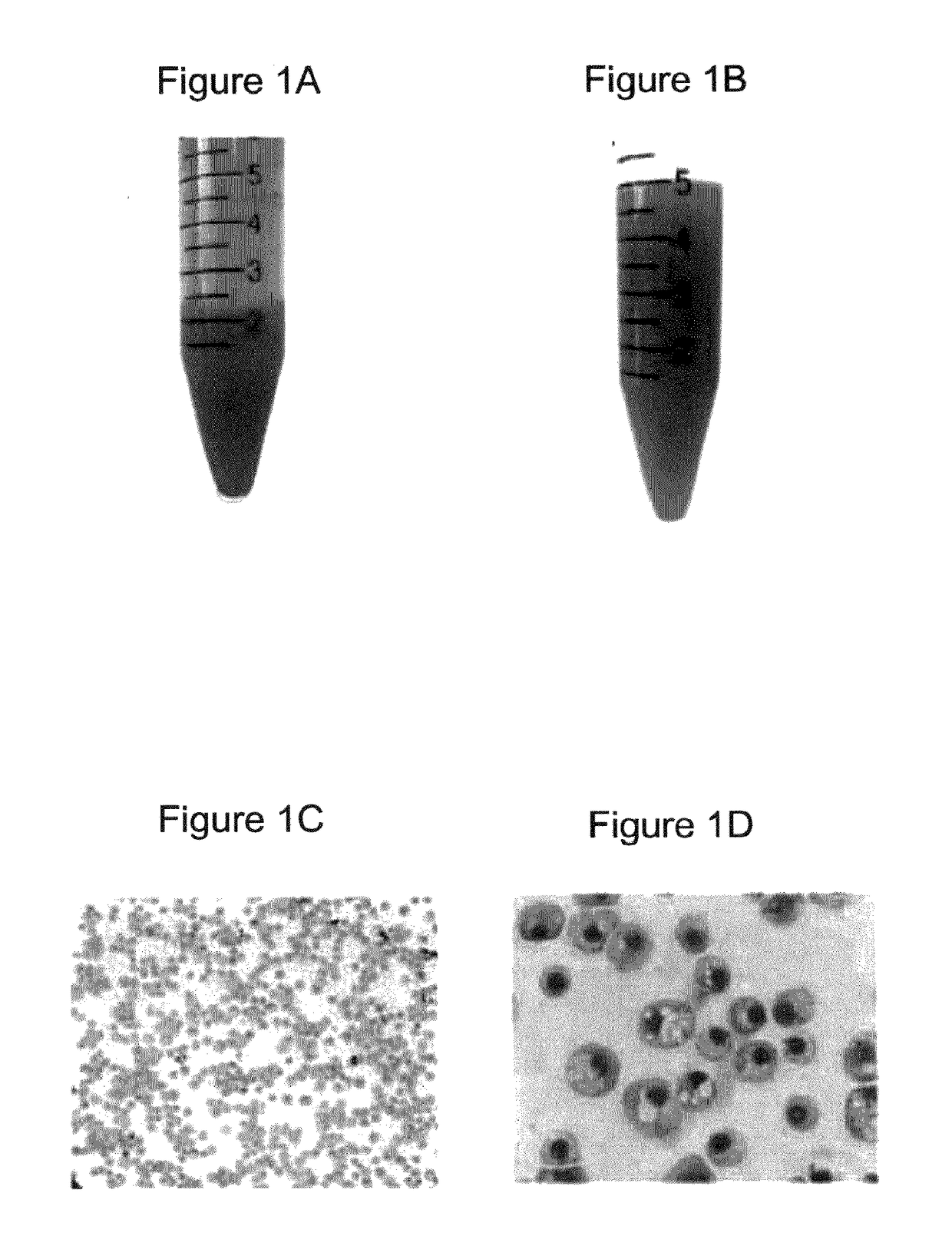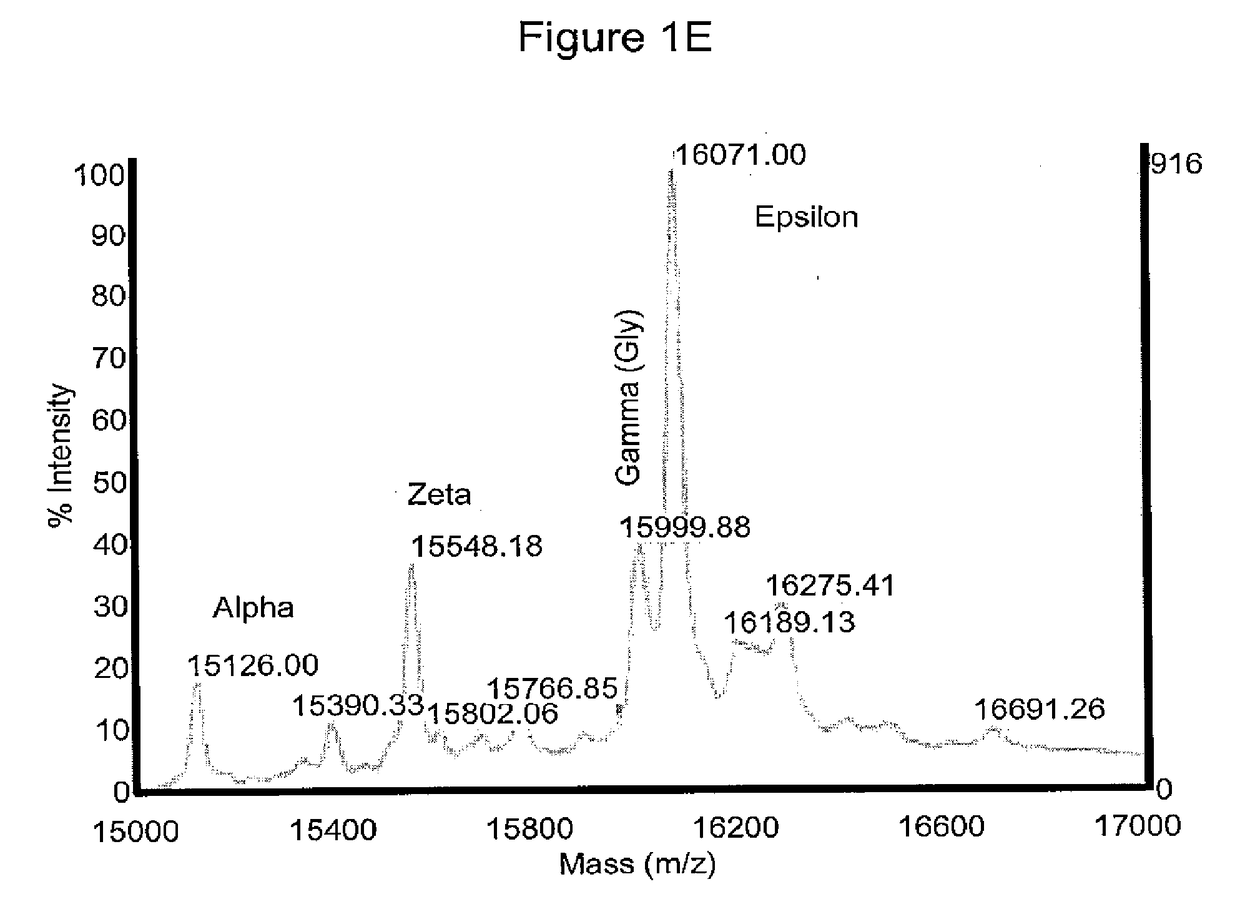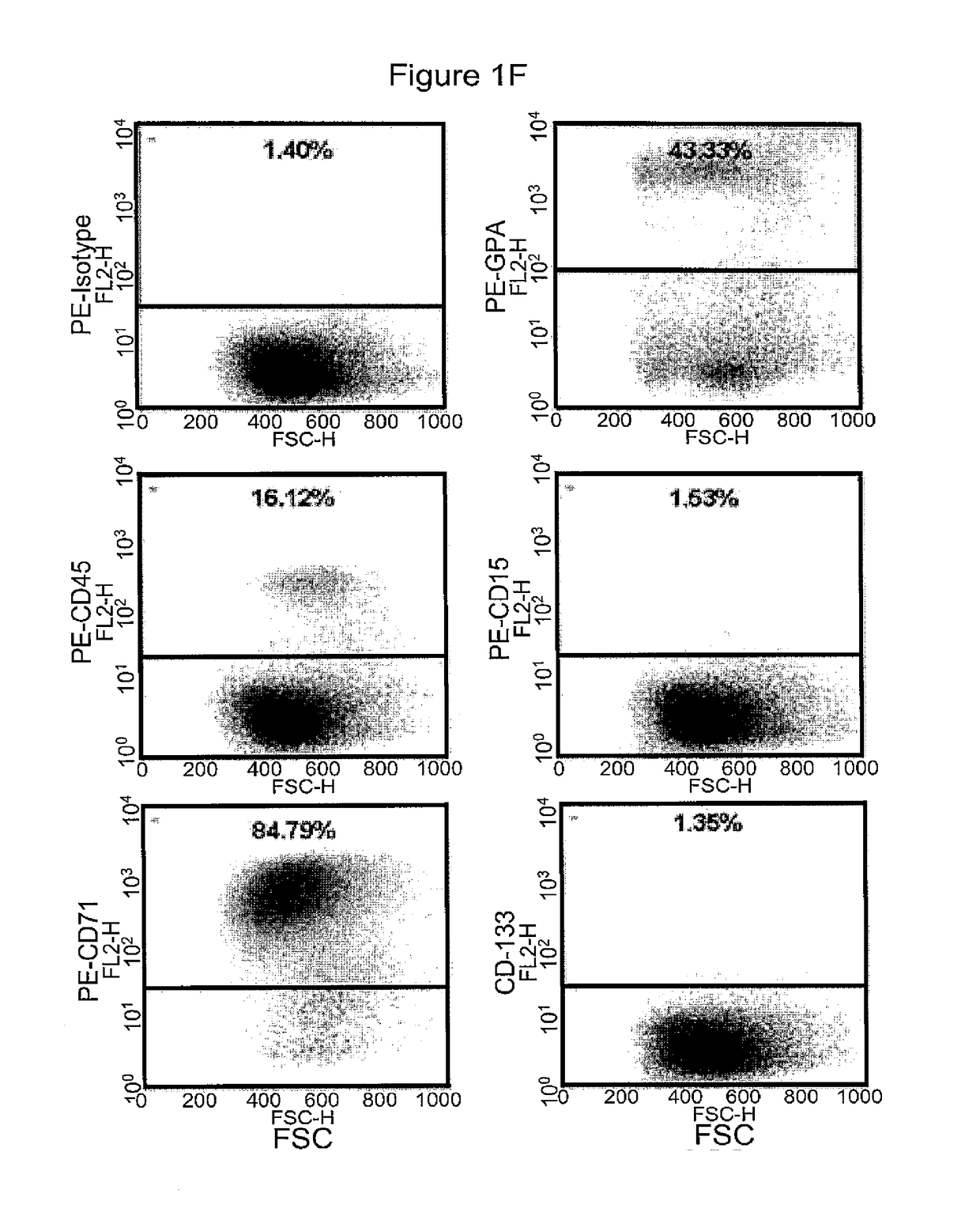Methods for producing enucleated erythroid cells derived from pluripotent stem cells
a technology of pluripotent stem cells and erythroid cells, which is applied in the direction of drug compositions, skeletal/connective tissue cells, extracellular fluid disorders, etc., can solve the problem of near constant shortage of blood
- Summary
- Abstract
- Description
- Claims
- Application Information
AI Technical Summary
Problems solved by technology
Method used
Image
Examples
example 1
Materials and Methods
[0353]Generation and Expansion of Erythroid Cells from hESCs Via Hemangioblasts
[0354]Four human ESC lines were used in the current study: H1 (National Institutes of Health registered as WA01), MA01 and MA99 (derived at Advanced Cell Technology), and HuES-3 (established by Cowan et al. (N.Engl.J.Med. 2004; 350:1353-1356) and obtained from the Harvard Stem Cell Institute). hESCs were grown on mitomycin C-treated mouse embryonic fibroblast (MEF) in complete hESC media until they reached 80% confluence. A four step procedure was used for the generation and expansion of erythroid cells from hESCs.
[0355]Step 1, EB formation and hemangioblast precursor induction (Day [−]3.5-0): To induce hemangioblast precursor (mesoderm) formation, EBs were formed by plating one well of hESCs per EB culture well (ultra-low six-well plates, Corning) in 3-4 ml serum free Stemline media (Sigma) with BMP-4, VEGF 165 (50 ng / ml each, R&D Systems) and basic FGF (20 ng / ml, Invitrogen). Half o...
example 2
Differentiation of hESCs into Red Blood Cells
[0374]Blast cells (BCs) were generated from hESCs as previously described (Lu et al., Nat.Methods 2007; 4:501-509). A four-step protocol was employed to differentiate the BCs toward the erythroid lineage, which included [1] EB formation from undifferentiated hESCs, [2] BC formation and expansion, [3] erythroid differentiation and amplification into a mass population of red blood cells and [4] enrichment of red blood cells. Early-stage EBs were generated from hESCs cultured in serum-free media supplemented with a combination of morphogens and early hematopoietic cytokines. The EBs were then dissociated and individual cells were plated in serum-free semi-solid blast-colony growth medium (BGM) for the growth and expansion of BCs. Grape-like blast colonies appeared at the beginning of 3 days, and rapidly expanded from 4 days. The BCs were then induced to proliferate and differentiate into erythrocytes by adding BGM and Epo for several days. T...
example 3
Characterization of hESC-Derived RBCs
[0375]Morphologically, the RBCs obtained using the above (19-21 day) protocol were nucleated (>95%) and substantially larger than definitive erythrocytes with an average diameter of approximately 10 μm. Giemsa-Wright staining showed an abundance of hemoglobin in the cytoplasm (FIGS. 1C and 1D). The identity of the cells was confirmed by immunological characterization (Table 1 and FIG. 1F). Over 65% of the cells expressed fetal hemoglobin (HbF), >75% were CD71 positive, and 30% of the cells expressed CD235a, whereas the majority of the cells did not express myelomonocytic or megakaryocytic antigens (All cells were negative for CD14, whereas 0.4% of cells expressed CD15; 8.6% of cells expressed CD41) and progenitor antigens (0.3% cells were positive for CD34; 10% cells expressed CD35, and 5% cells were positive for CD36) (Table 1). The inventors have previously shown that BCs express the chemokine receptor CXCR413. However, the inventors did not de...
PUM
| Property | Measurement | Unit |
|---|---|---|
| volume | aaaaa | aaaaa |
| periods of time | aaaaa | aaaaa |
| periods of time | aaaaa | aaaaa |
Abstract
Description
Claims
Application Information
 Login to View More
Login to View More - R&D
- Intellectual Property
- Life Sciences
- Materials
- Tech Scout
- Unparalleled Data Quality
- Higher Quality Content
- 60% Fewer Hallucinations
Browse by: Latest US Patents, China's latest patents, Technical Efficacy Thesaurus, Application Domain, Technology Topic, Popular Technical Reports.
© 2025 PatSnap. All rights reserved.Legal|Privacy policy|Modern Slavery Act Transparency Statement|Sitemap|About US| Contact US: help@patsnap.com



